Recent Articles
Popular Makes
Body Types
10 Things You Need to Know About the 2017 Toyota 86

2017 Toyota 86 3 4 front sunrise
When word about Scion's demise hit earlier this year, a shudder of worry floated through the enthusiast world. Scion’s impending closure put the future of the Scion FR-S and Subaru BR-Z in question. Affordable rear-wheel-drive sport coupes are a rarity these days and fans couldn’t bear the loss of this beloved pair. Fortunately, Toyota said the FR-S would continue as the Toyota 86, and now we have proof. We hope Toyota’s commitment to the platform runs as deep as its history; the 86 moniker pays homage to the legendary but short-lived rear-wheel-drive Corolla AE86. The Scion FR-S is dead. Long Live the Toyota 86. Here are 10 things you need to know about the 2017 Toyota 86:
1) The exterior has been revised.
The 2017 Toyota 86 looks noticeably different from the Scion FR-S, although the flanks are largely the same. Both the front and rear bumpers have been revised for 2017, with the most significant changes up front. The new massive grille widens the look of the car, and is flanked by triple vortex generators to manage airflow. Daytime running lamps have been moved from the sides into the headlamps. All forward lighting for the 2017 Toyota 86 is LED. The headlamps feature embossed 86 logos and the fenders carry attractive badges. The rear fascia features an updated aerodynamic lower diffuser and LED tail lamps. Seven exterior colors are offered for 2017: Ablaze Red, Raven Black, Oceanic Blue, Asphalt Gray, Steel Gray, Hot Lava Orange, and Halo White.
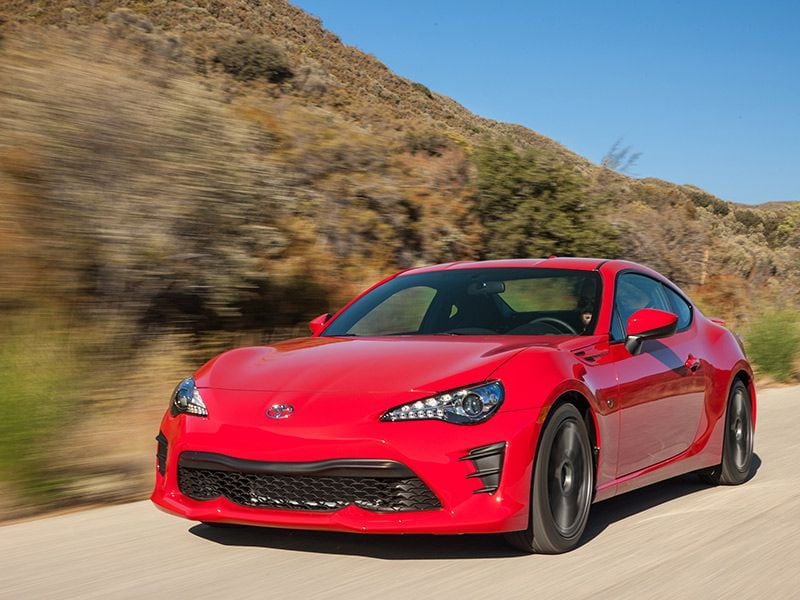
Photo by Toyota
2) The interior has been updated, too.
Like the old Henry Ford saying, you can get any interior color you want as long as it’s black. The 2017 Toyota 86 is exclusively offered with a black interior complemented by dark gray accents. While the outgoing model’s upholstery featured bright contrasting stitching, the new version uses subtle silver thread. New synthetic suede black Granlux material covers the bucket seat bolsters, door panels, and instrument panel. The beefy new 86-badged leather-wrapped steering wheel is slightly smaller than the previous version and features integrated infotainment system controls. The back seat remains a penalty zone, best reserved for pets, small folks, and baby seats.
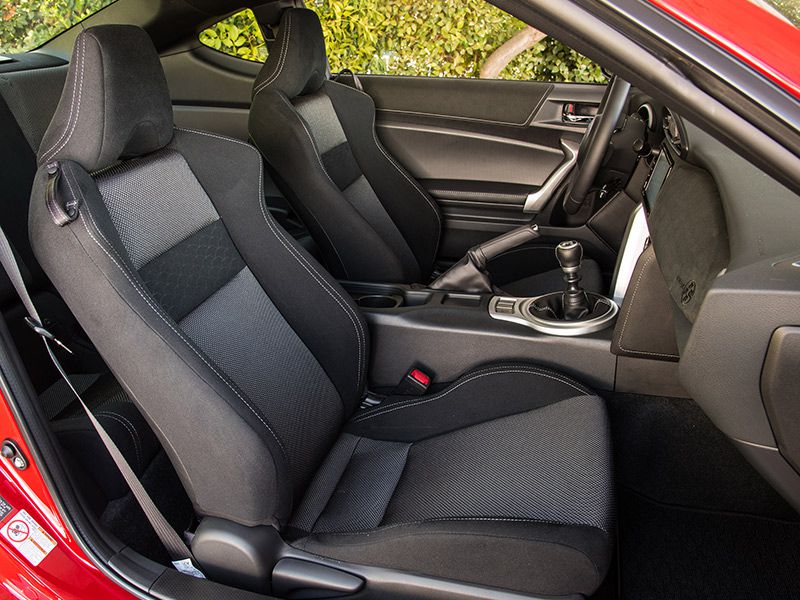
3) The engine is tuned differently for each transmission.
Despite enthusiast cries for a turbocharged engine, a 2.0-liter naturally aspirated flat-4 engine remains the sole powerplant in the 2017 Toyota 86. The boxer engine uses a combination of direct and sequential port injection and is offered with 6-speed automatic and manual transmissions. The flat-4 produces 200 horsepower and 151 lb.-ft. of torque when mated to the automatic. The numbers bump up to 205 horsepower and 156 lb.-ft. with the manual, thanks to internal changes. The automatic transmission is equipped with paddle shifters and Dynamic Rev Management to match revs during downshifts. When fitted with a manual transmission, the 2017 Toyota 86 has a sporty 4.30:1 differential ratio, for enhanced drivability and acceleration. The automatic continues with a 4.10:1 rear.
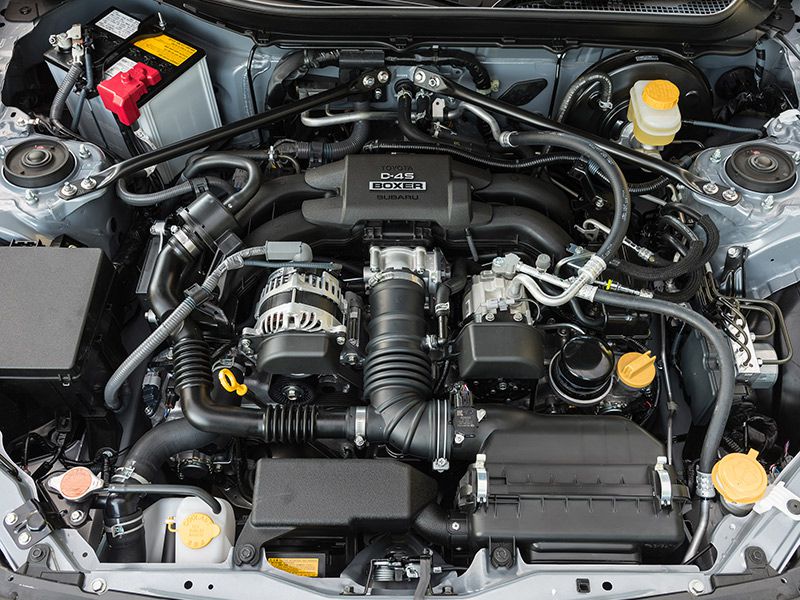
4) The suspension has been tweaked.
Call it what you will—FR-S, BRZ, 86, Subiyota or Toyobaru—this is one of the best-handling cars you can buy for the money. The front suspension uses a MacPherson strut setup, tied together by a brace for extra stiffness, while the rear uses a double-wishbone arrangement. The 2017 Toyota 86’s suspension has had changes to its shock tuning and spring rates. We tested the 86 on a set of remarkable canyon roads around Ojai, California, and walked away with a big grin and new respect for the car. Steering feedback is solid through the electric power-assist system, with approximately 2.5 turns of the wheel lock to lock. Vented disc brakes are used fore and aft, with 11.6-inch units in front and 11.4s in the rear.
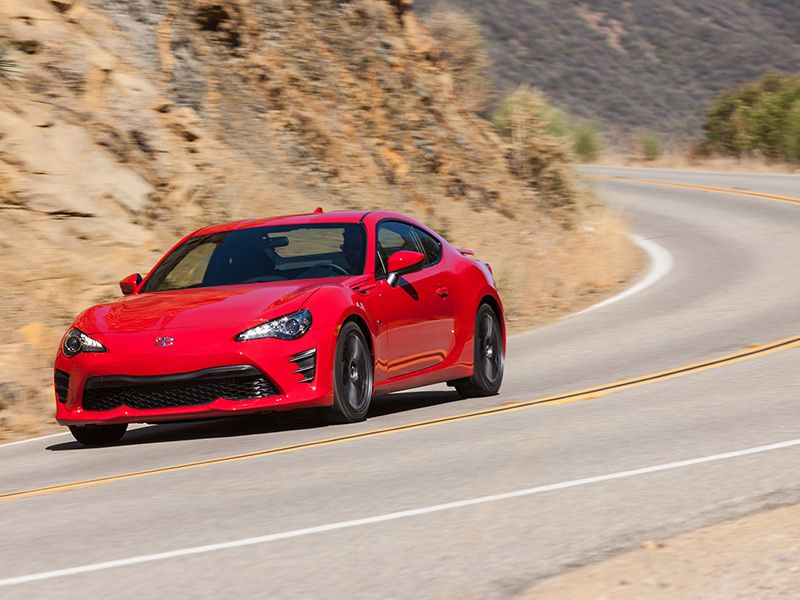
5) You may want to upgrade your tires.
The 2017 Toyota 86 rolls on new 17-inch twisted spoke alloy wheels, wrapped with grand touring summer Michelin Primacy HP tires or standard touring all-season Bridgestone Turanza EL400-02s. Wheels and tires are always a popular upgrade. If you want a different set of wheels straight from the dealer, TRD offers 17-inch matte gray and 18-inch black alloys. When you’re ready to upgrade your summer tires, Michelin Pilot Super Sports and Continental ExtremeContact DWs are among the most highly rated among BRZ and FR-S drivers, and Sumitomo HTR Z IIIs should be considered if you’re on a tight budget. Cold weather driving dictates a set of great winter tires and Bridgestone Blizzaks are always a safe bet.
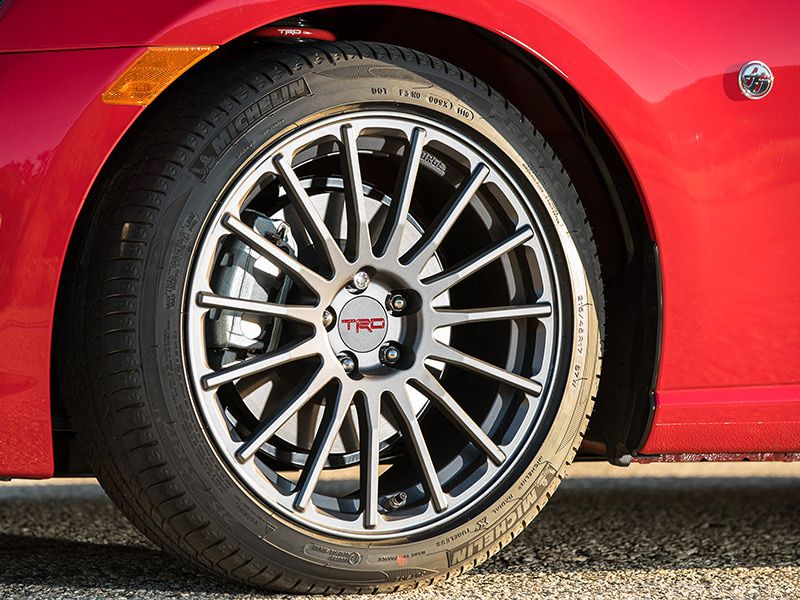
6) Infotainment is okay, but there's no Apple CarPlay or Android Auto.
The 2017 Toyota 86’s standard 7-inch touchscreen Pioneer infotainment system is equipped with eight speakers and provides bluetooth connectivity, with steering wheel controls. While Apple CarPlay and Android Auto are not supported, a standard backup camera aids the rear view, which is notoriously bad in sport coupes like the 86. Unfortunately, there is no high-end factory audio upgrade option. If the pure pleasure of driving outweighs your need for high-end audio, you’ll live with the factory setup. But if you’re an audiophile, the sound system will likely be the first thing you modify. To add navigation capabilities along with Apple CarPlay and Android Auto support, you’ll want to check out the Kenwood Excelon and Pioneer AVIC aftermarket head units.
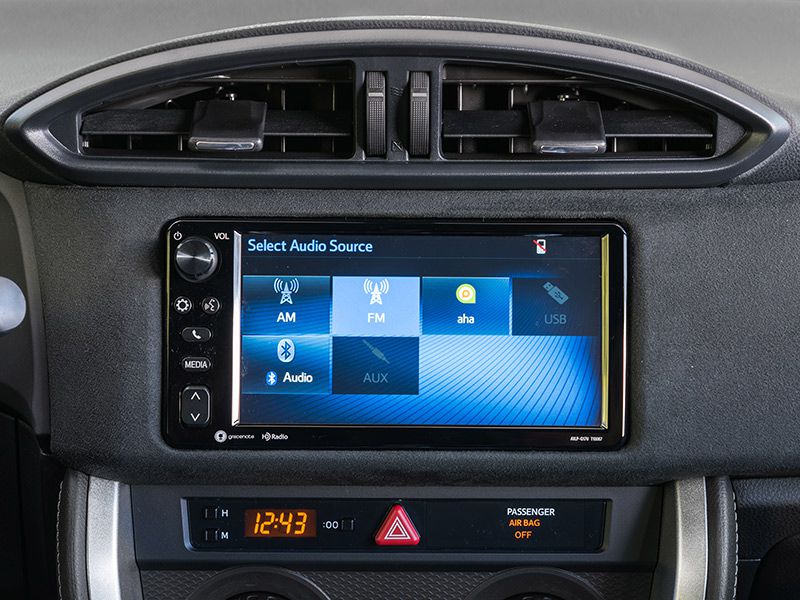
7) Toyota's TRD performance upgrades turn up the heat.
TRD Performance sells a host of dealer-installed performance upgrade parts for the Toyota 86’s drivetrain and suspension. You can swap out the stock air filter for a TRD Performance Air Filter ($75) or replace the the entire intake with a TRD Performance Air Intake ($425). The TRD Performance Dual Exhaust System ($1100) runs a single pipe back to the dual outlet rear muffler. The intake and exhaust are 50-state legal and have been engineered to deliver a slight increase in horsepower and torque. TRD Lowering Springs ($639) drop the 86’s height by approximately one inch, with linear spring rates in the front and progressive rates in the rear. The TRD Performance Sway Bar Kit ($550) is an easy bolt-on to improve cornering. Both the springs and sway bars are powdercoated in gloss red. The TRD Quickshifter ($195) shortens shift throws by 25 percent.
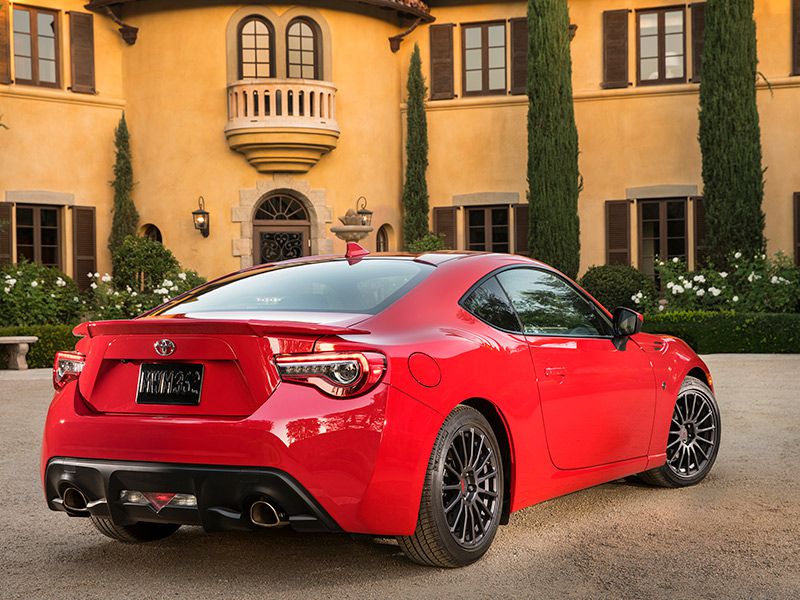
8) If you want a lot more power, you'll need to pull out your wallet.
The naturally aspirated 2.0-liter's modest power output has been a hot button for some folks from the first day the Scion FR-S and Subaru BRZ hit the street. This has been addressed to an extent with the updates and gearing changes in the manual-equipped 2017 86. (The manual engine is differentiated visually by its bright red intake.) Adding a TRD intake and exhaust system will add a wee bit more horsepower and torque, but to see serious gains you’ve got to spend serious money. The big question is this: How much power can you afford? The manual 86 in stock form is a joy to drive. Sure, it doesn’t roast the tires like Ryan Tuerck or Dai Yoshihara’s pro-level Formula Drift cars, but it doesn’t need to.
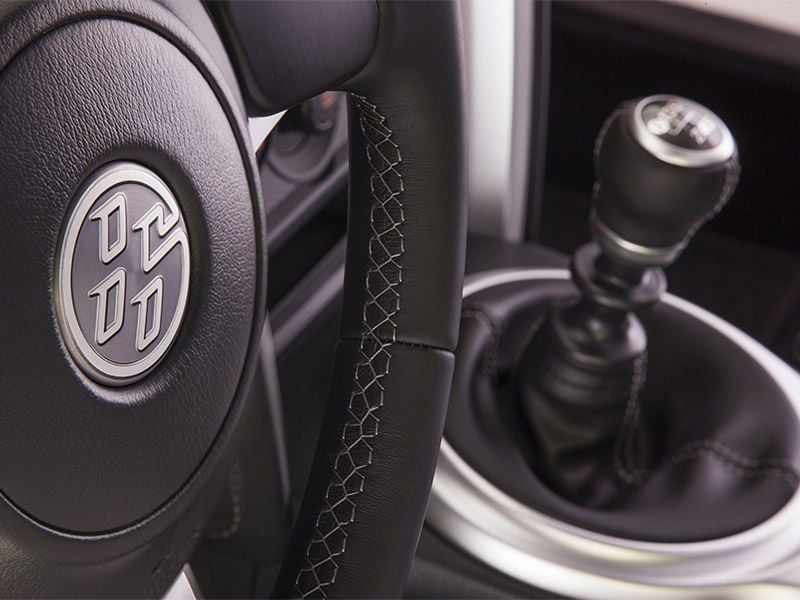
Photo by Toyota
9) Daily driving an 86 isn't for everyone.
Piloting a rear-wheel-drive sports coupe on a daily basis is both a joy and a commitment. The two biggest gotchas are poor rearward visibility and moderate passenger comfort at best. The 86 would benefit greatly from blindspot mirrors, and the rear seat, as alreadyt stated, isn’t suitable for most people. Fuel costs are an issue, as well. The manual-equipped 2017 Toyota 86 is EPA rated at 21 MPG city/28 MPG highway/24 MPG combined, while the automatic delivers a significantly more thrifty 24/32/27. That’s not too shabby, but you’ll pay a lot more at the pump beacuse the 86 requires premium fuel. While E30 fuel delivers all the octane you need at a price less than regular unleaded gasoline, is not factory supported.
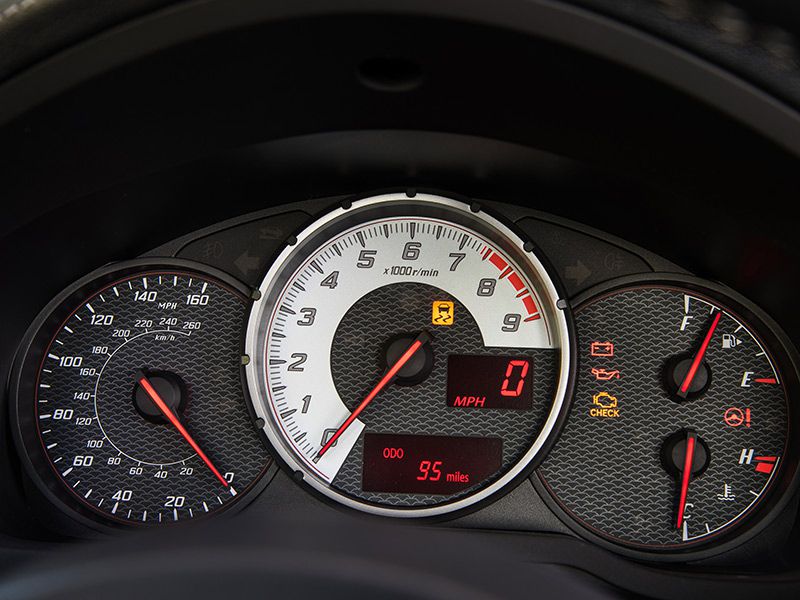
10) Choosing an 86 over the BRZ (or visa versa) is a matter of taste.
Comparing the Toyota 86 with the Subaru BRZ isn’t like comparing apples and oranges, it’s more like Honeycrisps and Fujis. In other words, the differences are subtle. The 2017 Toyota 86 has a starting MSRP of $26,255 with the 6-speed manual transmission, and $26,975 with the automatic. The 2017 Subaru BRZ carries a slightly lower starting MSRP of $25,495. In Limited trim, the BRZ clocks in at $27,645. That extra coin buys you Alcantara/leather-trimmed upholstery, dual-zone HVAC, fog lamps, and a rear spoiler; Brembo brakes are an option. Alas, the BRZ’s 6.2-inch touchscreen Starlink infotainment system does not support Apple CarPlay or Android Auto. The best bet? Try them both on, see which bucket seat fits you best, and make the dealers battle it out.
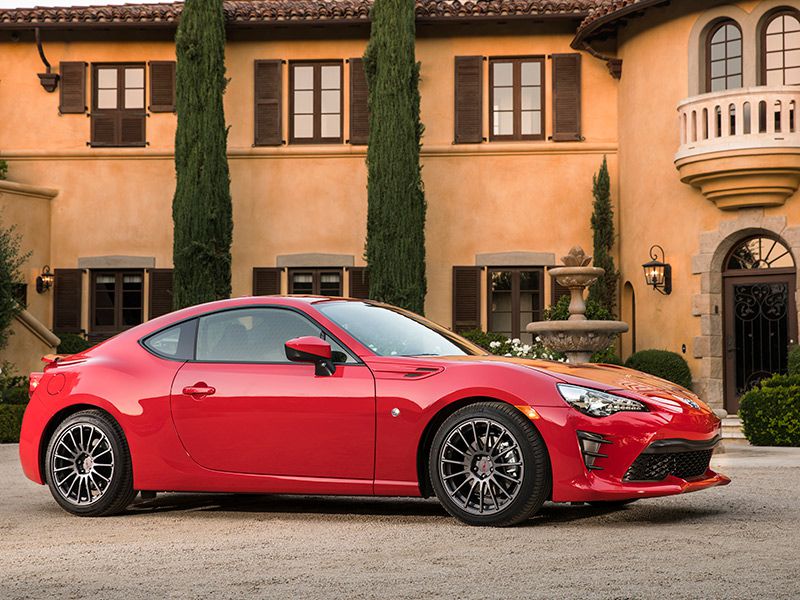
Photo by Toyota